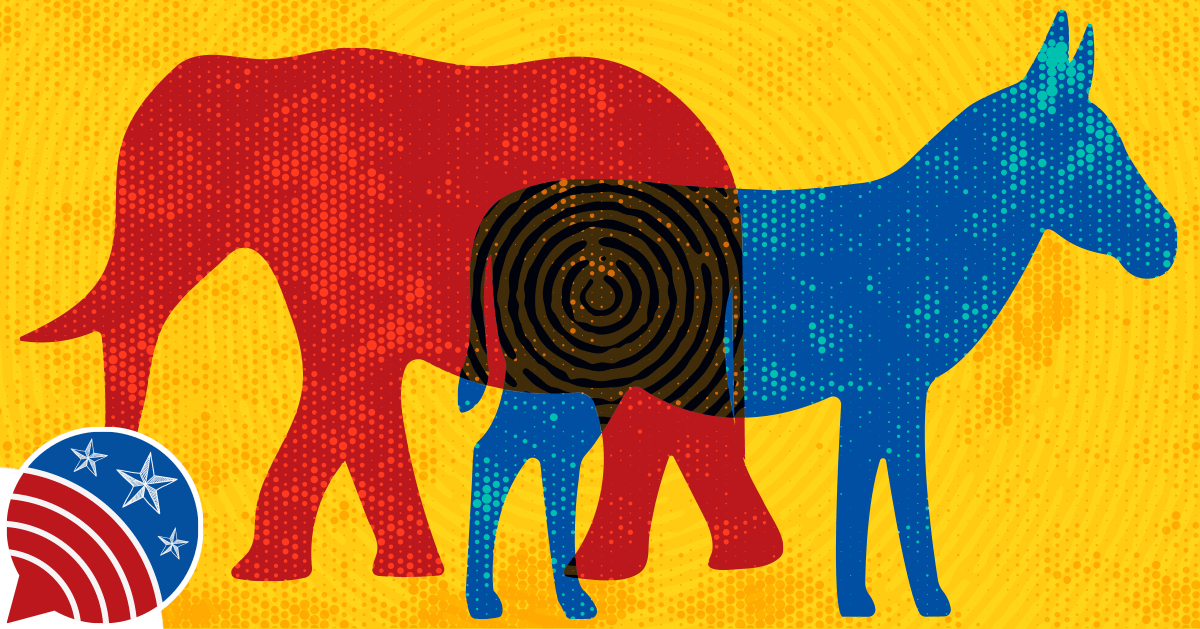
The Evolution of Political Parties
Have our political parties always been this contentious? What purposes do political parties serve? Our two party-system was present at the founding, but the evolution of political parties in America has not been linear. Explore the nuances within liberal and conservative factions. Prepare to engage in discourse about the benefit and harm political parties cause and what role the people have in them.
Podcasts & Videos
Political Parties in Jacksonian Democracy: The Evolution of Political Parties in America, Part 3
Instructions
- Watch and listen to the 60-Second Civics video below. If you'd like, you can also read along using the script that appears below the quiz. Or you can turn on the video's subtitles and read while watching the video.
- Take the Daily Civics Quiz. If you get the question wrong, watch the video again or read the script and try again.
Episode Description
Dr. Donna Phillips: Welcome to 60-Second Civics, the daily podcast of the Center for Civic Education. I'm Donna Phillips. Today we continue in our series on political parties as part of the Civil Discourse: An American Legacy project. We are joined today by special guest Dr. Lester Brooks, American history professor emeritus from Anne Arundel Community College. Welcome, Dr. Brooks.
Dr. Lester Brooks: Thank you for having me.
Dr. Donna Phillips: Sure. Dr. Brooks, how did political parties continue to evolve during the Jacksonian era?
Dr. Lester Brooks: In the election of 1824, Andrew Jackson is running for the first time, and by that time, one of the original political parties, the Federalist Party, had collapsed. Now the Republican Party begins to turn on itself because they don't have anyone to fight other than themselves. And the outcome will become, well, the two new political parties. The followers of John Quincy Adams will be called the National Republicans.
Ultimately, with the election of 1828, we get the followers of Andrew Jackson calling themselves the Democrats. Also, we now have a popular vote. And so now electioneering begins to explode on the scene because they have to get the people out to vote. So now we're going to see the electioneering take off, and the Jacksonians will be excellent at bringing out the people to vote.
Dr. Donna Phillips: Wonderful. Thank you, Dr. Brooks. 60-Seconds Civics, where civic education only takes a minute.
Dr. Lester Brooks: Thank you for having me.
Dr. Donna Phillips: Sure. Dr. Brooks, how did political parties continue to evolve during the Jacksonian era?
Dr. Lester Brooks: In the election of 1824, Andrew Jackson is running for the first time, and by that time, one of the original political parties, the Federalist Party, had collapsed. Now the Republican Party begins to turn on itself because they don't have anyone to fight other than themselves. And the outcome will become, well, the two new political parties. The followers of John Quincy Adams will be called the National Republicans.
Ultimately, with the election of 1828, we get the followers of Andrew Jackson calling themselves the Democrats. Also, we now have a popular vote. And so now electioneering begins to explode on the scene because they have to get the people out to vote. So now we're going to see the electioneering take off, and the Jacksonians will be excellent at bringing out the people to vote.
Dr. Donna Phillips: Wonderful. Thank you, Dr. Brooks. 60-Seconds Civics, where civic education only takes a minute.






